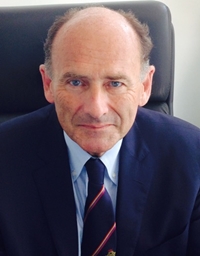|

|
Olivier Sterkers, MD,PhD Professor Emeritus of Sorbonne University Member of the French Academy of Surgery Topic: Production of Inner Ear Fluids: A reappraisal. |
The two inner ear fluids, the perilymph (PL) and the endolymph (EL), differ largely in electro-chemical composition. The former resembles to an extracellular fluid, rich in sodium (Na) but with a low content of proteins, the latter mimics an intracellular fluid rich in potassium (K) but with a very low content of proteins and positively polarized, which potential is about +100mV and +10mV in the cochlear and vestibular EL, respectively. In the cochlea, these 2 fluids are separated by a tight heterogenous epithelium which has a triangular radial shape, PL and EL being on its abluminal and luminal sides, respectively. PL fills the scala vestibuli and tympani and EL the scala media (also named cochlear duct). The organ of Corti comprises of the sensory hair cells and supporting cells,Reissner membrane is made of 2 thin cellular layers, and the lateral wall is a much complex vascularized epithelium, including the stria vascularis and the lateral spiral proeminence, attached to the bony otic capsule by a vascularized conjonctive structure, the spiral ligament.
It has long be thought that PL originates from the cerebrospinal fluid through the cochlear aqueduct (CA) which could be a pathway between the posterior fossa and the basal turn scala tympani. However, CA is filled with an arachnoid mesh and its patency is doubtful in humans but not in rodents. It is rather an overflow system for the cochlea which is devoid of lymphatic drainage than an active fluid communication.
The stria vascularis has been considered to secrete EL because of its vascularization but no evidence has been provided to sustain such an assertion. The presence of K electrogenic pump has been postulated but was never identified.
Compartmental analysis of radioactive electrolytes and small hydro-soluble molecules have demonstrated that PL originates from plasma, and EL from PL. A barrier restricting the hydro-soluble molecule entry except for essential compound such as D-glucose was identified, the so-called blood-PL barrier [1]. The unusual electro-chemical EL composition may be accounted for by Na reabsorption which is replaced by the more permeant K leading to both osmotic gradients between EL and PL and all along the cochlear duct from base to apex. K recycling from the organ of Corti to the lateral wall would provide the substratum for the transduction processes.
EL formation is radial and nearly no flow exists in the cochlear duct. The endolymphatic sac has multiple roles including overflow system with epithelial Na and water reabsorption equipment, pH regulation, and waste product absorption.
Trans-epithelial transfers of electrolytes and water are regulated by hormonal controls of the different transport systems and any dysfunction of them might induce a fluid accumulation within the cochlear duct, the so-called endolymphatic hydrops.
